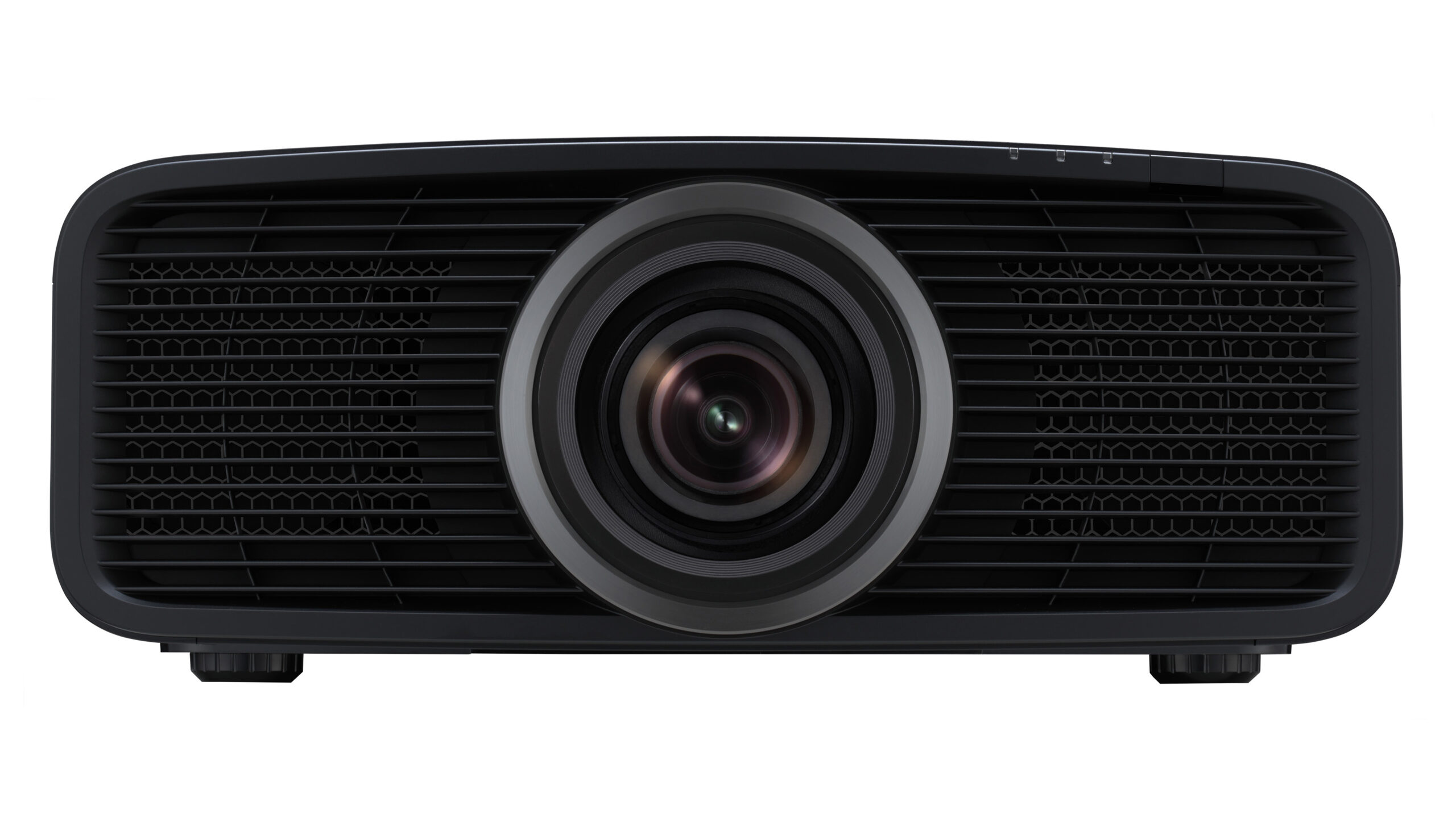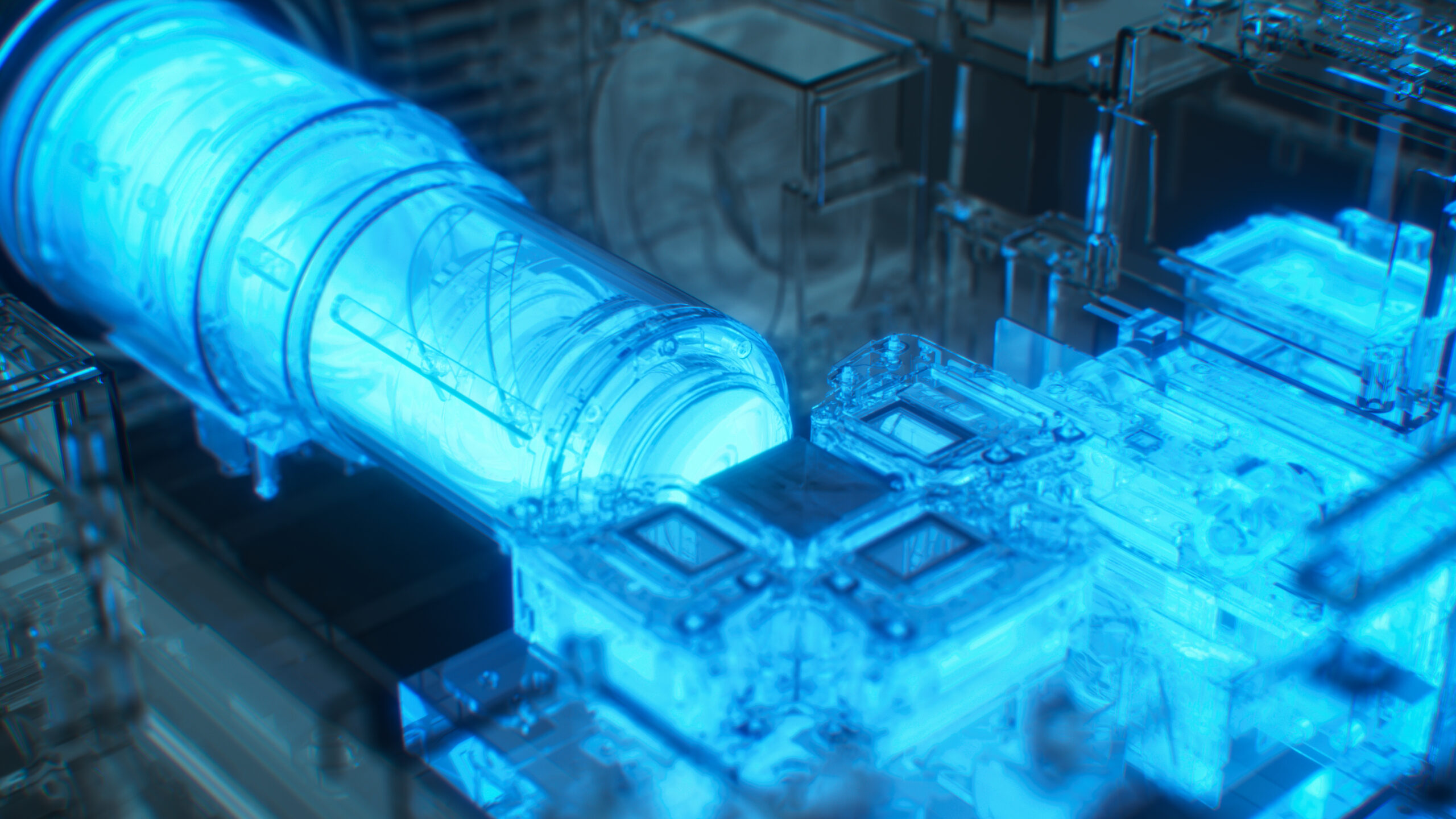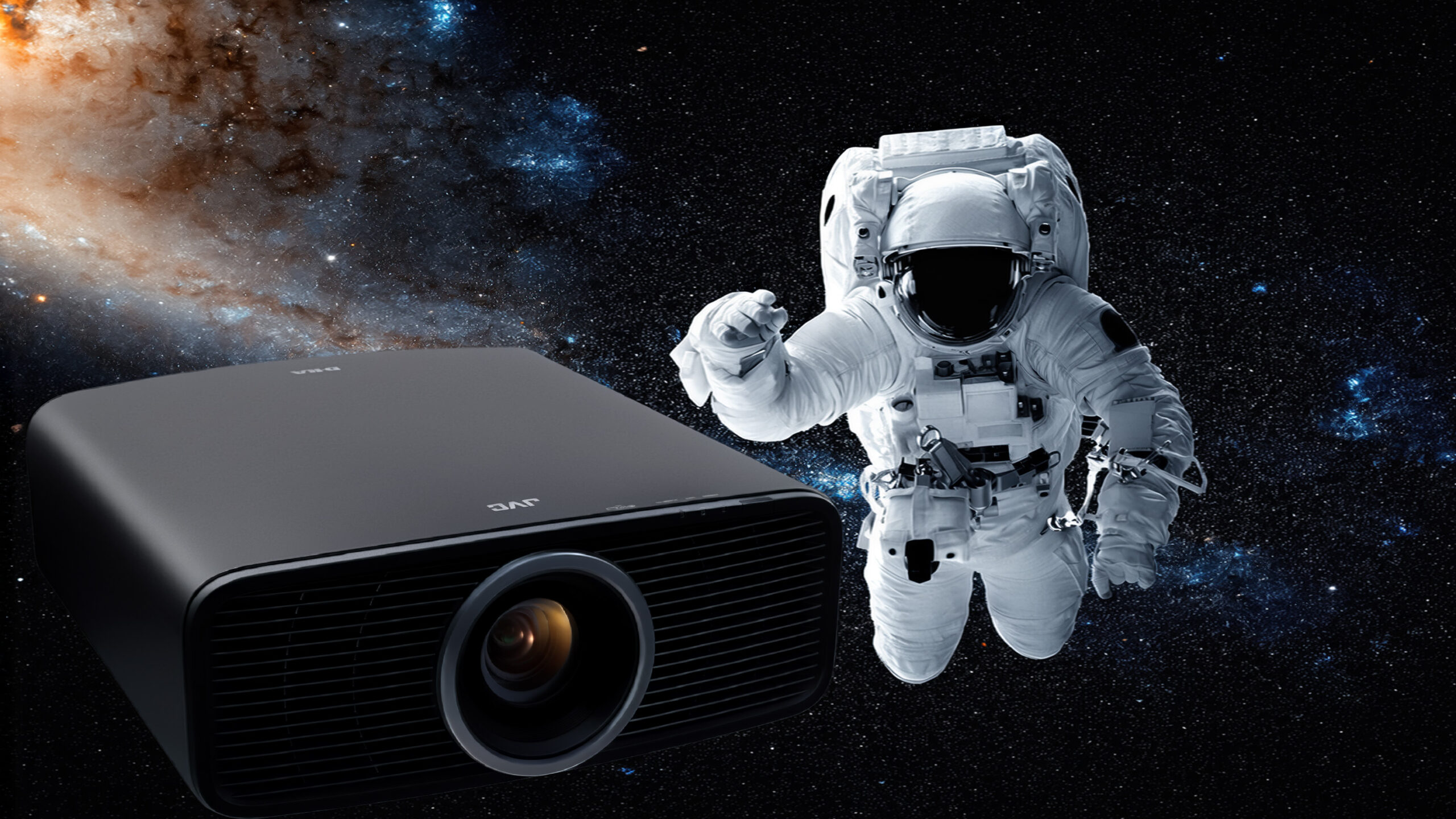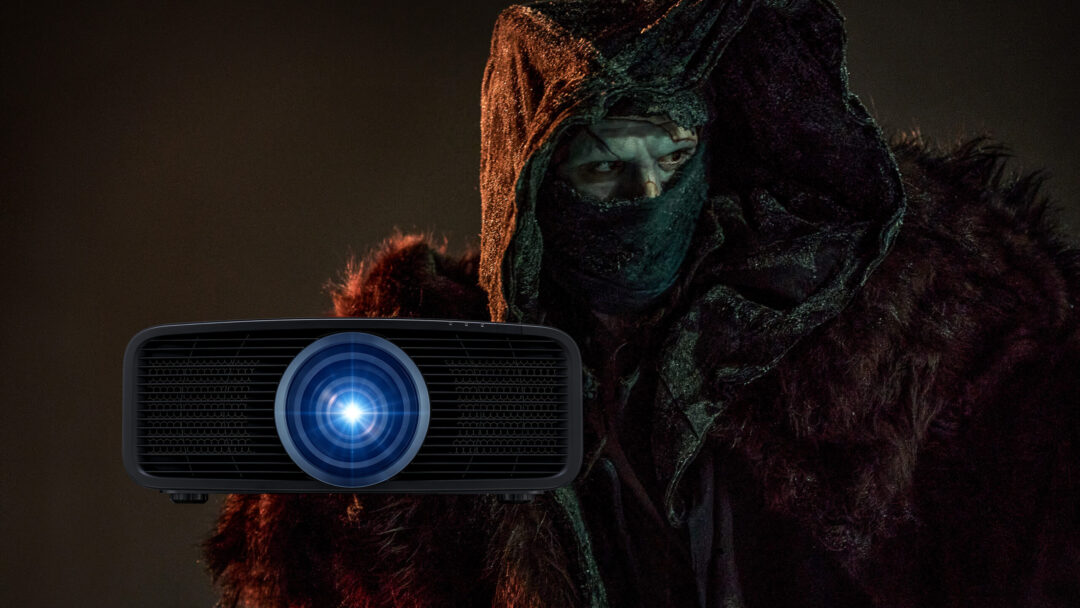The JVC DLA-NZ500 is by a narrow margin the most affordable home cinema projector on the market with true 4K resolution. It’s also more compact than its competitors. JVC has redesigned everything – optical unit, lens and circuit board – to create the world’s smallest true 4K projector.

Blue laser
The projector uses JVC’s own BLU-Escent laser as a light source with a brightness of 2,000 lumens. The basic contrast is an impressive 40,000:1, and with dynamic laser dimming it achieves almost infinite contrast in completely dark scenes.
Compact powerhouse, but no 120 Hz
JVC has managed to squeeze a lot of technology into a compact housing. The motorised lens gives you ±70 percent vertical and ±28 percent horizontal shift. This means great flexibility in positioning. The air intake is at the front, while the hot air is let out at the back. This prevents heat from rising in front of the projector and causing image distortion (called ‘heat haze’) and makes installation easier.
Where competitor Sony offers 4K 120 Hz for gaming on both HDMI inputs, JVC has not prioritised this. Not a dealbreaker for most, but worth noting.

Fabulous tone mapping
The projector was tested side-by-side with the Sony Bravia Projector 7 and both had been professionally calibrated beforehand.
JVC has full control over the HDR display. It has built-in technology that dynamically analyses content and adjusts tone mapping per scene or per image. The new Deep Black Tone Control makes the dark shadow levels sink even deeper.
On Oppenheimer, this becomes apparent. The black and white scenes take on an extraordinary richness of detail. Every little detail is emphasised with an authority rarely found in a projector.
Depth in the dark
In dark scenes, JVC surpasses even the slightly more expensive Sony Bravia Projector 7. In a scene where flames cover the entire screen, the JVC projector gives a red glow from the flames with black around them. The Sony image appears paler with less visible red in the shadows. The play in the flames is less obvious.
It’s all about contrast. Where the Sony already has a very dark black level, the JVC projector dives even deeper. Metal objects glitter more realistically. The image takes on a three-dimensionality that the Sony projector, despite its higher price, can’t quite match.
In bright scenes, the images are surprisingly similar, but here too there is a little more punch in the JVC picture.

Motorised magic
The motorised lens is worth its weight in gold. Stretch the image to completely cover a wide screen. Or zoom out so a 16:9 image fits inside the top and bottom edges. Block stray light that ends up outside the screen. All with the remote control. If you have a 16:9 screen, you can lower a cinemascope image to the bottom edge of the frame with the press of a button. This eliminates the grey stripe under the image and the difference in perceived dynamics is striking.
It’s something that the Sony projector lacks despite its higher price.

Warming up
For the first hour, you’ll have to live with a moderate green tint from the laser light source. This will disappear once the projector has warmed up properly. This is typical for blue laser projectors and JVC is not the only one. But it’s not very visible, so there’s no need to wait for it to stabilise before starting the film.
The maximum brightness is marginally lower than some competitors. In a completely dark room this isn’t a problem, but if you have little light in the room, a brighter projector can be an advantage.
Perfection in every detail
With its 14.6kg and compact dimensions, the JVC DLA-NZ500 is easier to position than many of its competitors. The noise level of only 23 dB makes it whisper quiet during use.
Where the optics of previous generations caused some vignetting in the corners, JVC has completely solved this with the new optics. Like Sony, a plastic lens element is used at the very edge, while everything else is made of glass. This means more even black and light levels in the corners. Combined with the deep black levels, this results in an image with impressive depth and three-dimensionality.

Conclusion
The JVC DLA-NZ500 is an exceptionally good home cinema projector that delivers where it really counts: contrast and black levels. The motorised lens with blanking is a luxury feature that makes it child’s play to adjust the image to the screen.
The fact that the JVC projector costs less than its Sony competitor, while outperforming it in all disciplines that matter, makes this a great buy in its class.
Even higher brightness might have been nice, and we would have liked 120 Hz for gaming. But the projector is still the best overall package for the price.

We think
Sharp and detailed image, impressive black level and contrast. Motorised lens with blanking, the best in HDR tone mapping. Finally a perfectly even light distribution! Very quiet. Moderate green tint in the first 20 minutes, no 4K/120Hz.
6499 €
Specifications
- Technology: D-ILA (LCOS) / Laser
- Resolution: Native 4K (4096 x 2160)
- Brightness: 2000 ANSI lumens
- HDR: HDR10, HDR10+, HLG, Frame Adapt HDR Gen2,
- HDMI: 2 x 2.1 (32 Gbps)
- Gaming: 4K/60Hz
- Optics: Motorised zoom/focus/shift
- Contrast: Native 40,000:1, Dynamic ∞:1
- Noise level: 23 dB
- Light source lifetime: 20.000 h (mercury-free)
- Dimensions: 450 x 181 x 479 mm
- Weight: 14.6 kg
- Web: jvc.com

